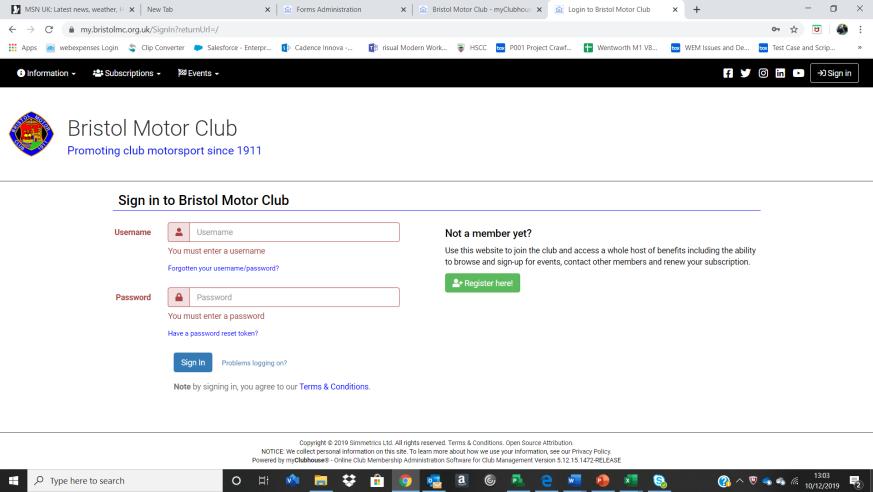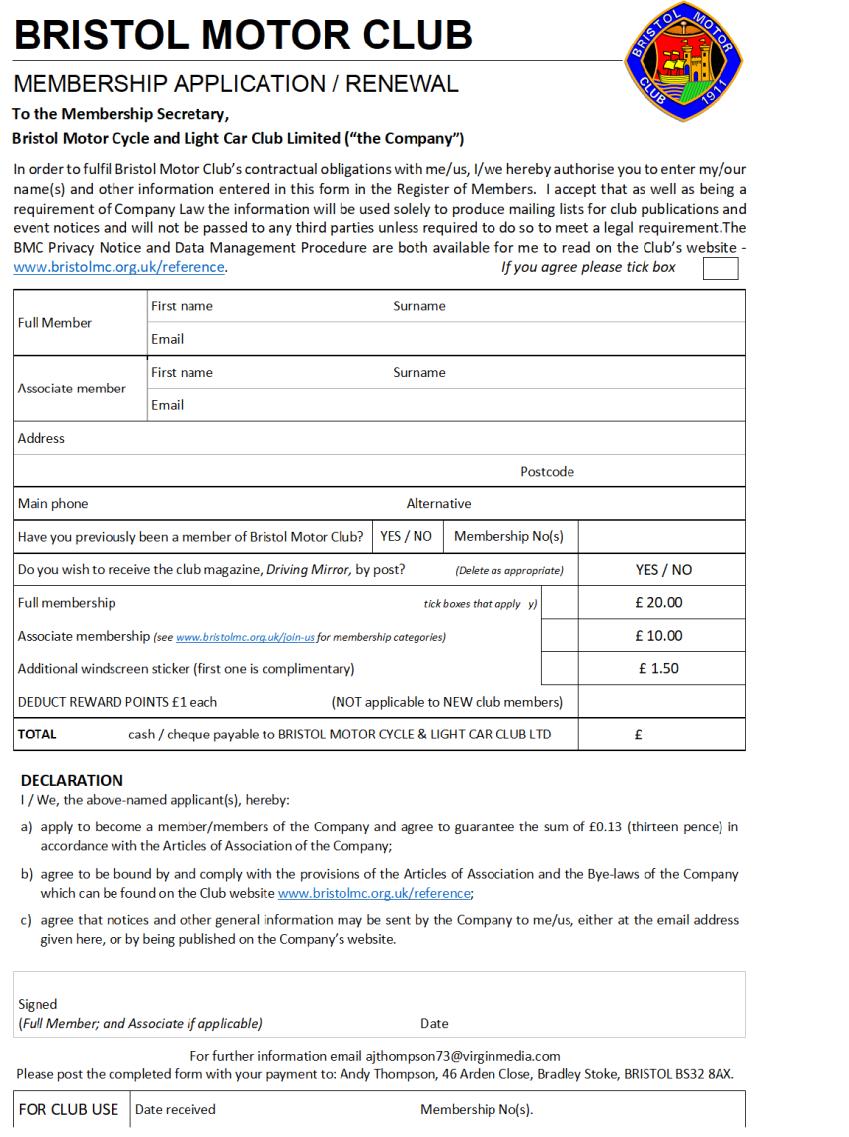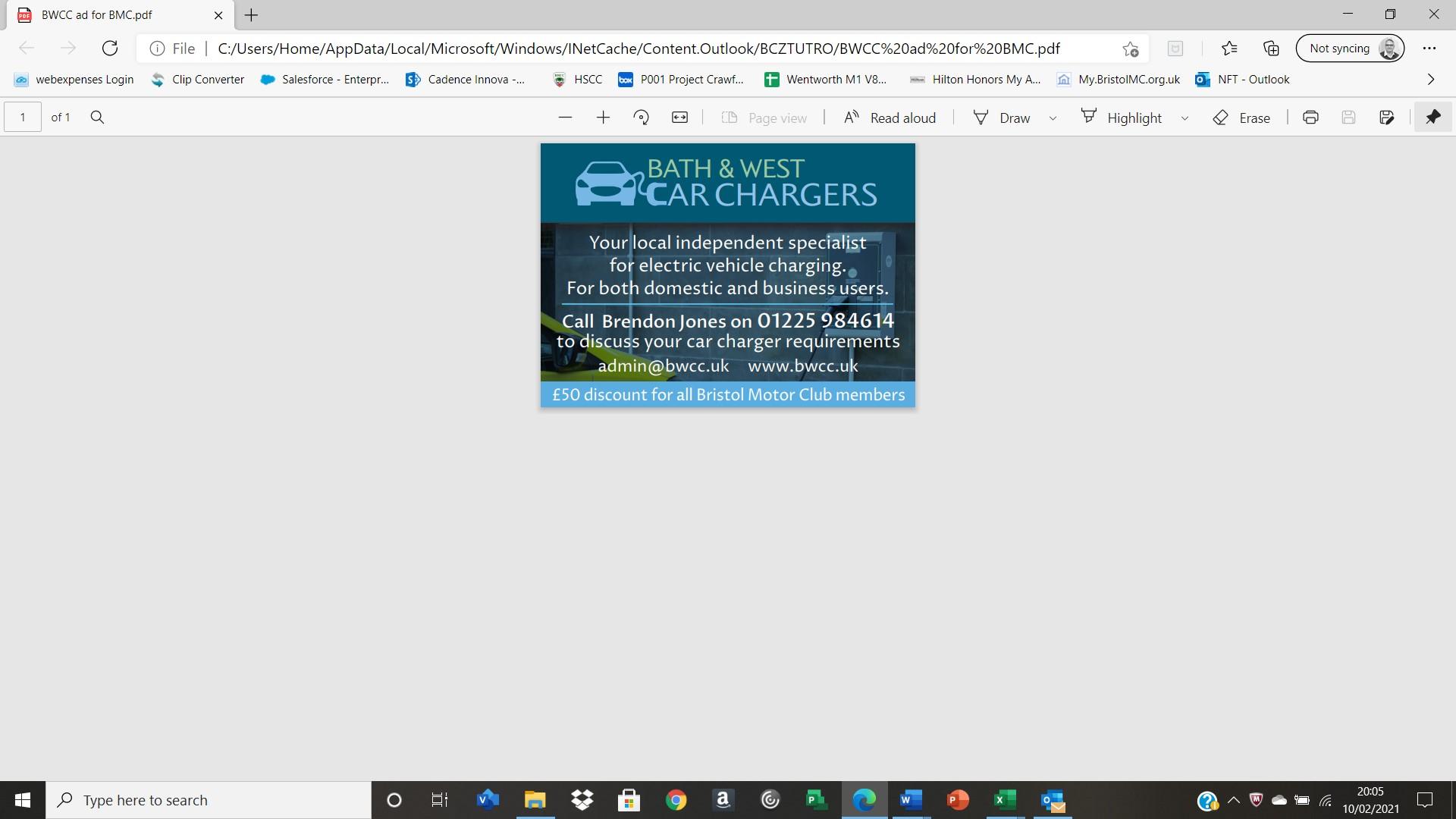
12 minute read
Drive-By
“Crikey, how much?” personally I blame the..? TV News broadcasters.
Why TV news broadcasters? Because if you think back over the period since the first lockdown, even allowing for the main protagonists in my previous list, our fuel prices were reasonably stable throughout.
Advertisement
Stable that is, right up to the point that the TV news people decided that a few petrol stations in the London area running out of unleaded due to some minor delivery issues was worthy of a major report slot on prime-time evening national news, because, you know, London. Report evening after evening after evening…
Oh yes, the astonishing latest fuel costs really are something to groan about, and I did plenty of grumbling when I was recently obliged to cough up a penny chew less than £1.50 for just a litre of diesel sludge from my local supermarket’s fuel station.
Given that we stuck to our guns and never adopted measuring travelling distance by the kilometre used pretty much everywhere else on the planet, and stuck with the, brilliantly good for centuries, statute mile, I presume we started selling fuel by the litre as a sop to the EU (probably after previously blithely signing up to yet another lengthy tome of unread legalise that had been generated by some of Brussel’s overpaid bureaucrats with too much time on their hands) and £1.50 per litre doesn’t sound too horrendous if you say it quickly, and certainly infinitely more palatable than the same cost in good old fashioned gallons which works out at a mindboggling £6.76 a gallon, dear God!
I’ve heard a number of reasons and rationales being purported for the current cost of keeping the fuel tank wet in your chosen jalopy: Brexit, Covid, troubles in the Middle East and opportunistic price setting by the OPEC nations being principle among many, but “No need to panic” said all the experts involved, “there’s plenty of fuel and no problems anywhere else in the country”.
Fine in principle, but the great UK public promptly decided that Armageddon was obviously descending upon us all and that a full tank of fuel, even if it wasn’t their usual time for their fortnightly top up, was their absolute priority above all else in their lives and, ‘et voila’, constant queues at all the petrol stations in the nation and, now, a genuine fuel shortage for the TV news broadcasters to bang on about as the fuel suppliers struggled to keep up with this near instant maximum
demand. Bang on about evening after evening after evening…
So the rest of the world can’t generate enough news items? No worry, said the broadcasters, we understand how the Great British public react to a fuel shortage, real or imagined, so we’ll make a mountain out of the proverbial molehill and milk it for weeks.
And, according to the immutable laws of commerce, what happens if demand outstrips supply? Yep, the price rockets. Well done, several weeks of what should have been non-newsworthy event that made the rest of us just a little bit poorer. Still, could be worse. I was recently reading in a copy of one of my monthly classic aeroplane magazines about a chap who owns and flies a refurbished example of an early post-war Hawker Sea Fury.
The Sea Fury is one of the last of the piston-engined fighters and became operational at just about the same time as the early jet fighters that heralded the new era of powered flight. Capable of achieving 475mph in level flight and with a rate of climb that could outstrip some of those early jet contemporaries, the Sea Fury was fitted with an 18 cylinder, Bristol Centaurus sleeve-valve radial engine of around 2,500bhp. How do you get a reliable 2,500bhp from an engine? Well, even allowing for strapping on a whopping great supercharger, as our American colonial cousins regularly say ‘there’s no replacement for displacement’, and in the case of the Centaurus engine, this means a capacity of 54 litres (yes, 54,000cc).
And with great power comes great, uhm, well, fuel consumption, not surprisingly. In this case a drink problem that disposes of nearly 100 gallons an hour when merely cruising, and rising to well over 250 gallons an hour if you’re trying to dispatch some baddies and have the throttle pegged at full combat power –and around £30 a minute if aviation fuel is priced like the current high street costs for unleaded. THIRTY POUNDS for each and every minute, or £1 every two seconds. Blimey, and I thought my old Jaaag was a bit of a wallet-rinser!
Aircraft magazines aside, my current bedside reading is a book written by Callum E. Douglas and entitled ‘The Secret Horsepower Race – Western Front Fighter Engine Development’ and which uses archive information to investigate British, American and German military aircraft engine development during World War 2.
The author is a highly qualified engine designer who has worked in F1 for a number of years and the book is an absolutely fascinating insight into aircraft piston engine development during its greatest period.
With the three featured nations entering WW2 with aircraft engines of around 30
litres capacity and rated at about 1,000bhp (the single-stage, single-speed supercharged Rolls-Royce Merlin engine was 27 litres and chucked out 1,050bhp in 1939), the race was soon on for the next generation of engines with a requirement of around 2,000bhp and suitable for combat at ever increasing altitudes (control the height, control the fight).
The British promptly set about developing a two-stage, two-speed supercharger for the Merlin engine which then got delayed into operational use as the designers at Supermarine struggled to redesign the Spitfire for this longer engine (the supercharger was placed at the rear of the Merlin).
An interim Merlin was swiftly developed which had a single-stage, two-speed supercharger which didn’t add length to the existing unit, and Supermarine set about developing the Spitfire mark IX specifically for this revised Merlin engine, bringing in the full-fat two-stage, twospeed unit in later marks of Spitfire.
America was somewhat behind the curve as they preferred radial air-cooled engines over the water-cooled inline units used in Europe which, although capable of prodigious horsepower at low level, did suffer from a drastic drop in performance at increased altitudes due to poor supercharger design. America was leading the way, however, with development of the exhaust driven turbocharger. Now, Germany. German military aircraft engine development was banned by the Treaty of Versaille at the end of WW1 and they spent the period after the Nazi’s takeover of the country in 1933 playing catch-up and with practically unlimited resources as good ol’ Adolf appeared to have some plans and had decided that the Treaty had gone on far too long…
So Germany entered the war with a couple of really competitive engines, the Daimler Benz DB series and the Junkers Jumo design, and BMW was progressing rapidly with its design for a 2,000bhp aircooled radial engine which was eventually installed to the superlative Focke Wulf FW190 fighter which gave the RAF such a shock when it entered operational service.
Given the continued practically unlimited budget and the German reputation for engineering excellence, how did they ultimately fall behind so much that from 1943 onward, they weren’t able to field competitive fighter aircraft in anything like the numbers needed to maintain their operational requirements? Two items stand out as the reason for the problems with German aircraft engines in the mid to end of war period.
Firstly fuel. All three nations had recognized that a higher octane rated fuel would give a considerable performance boost and developed 100 octane fuel at the start of the war to take over from the then standard 87 octane in common use. The problem being that Germany
had nothing like the access to natural oil reserves that the allies enjoyed and relied on a process of refining oil from coal which was then refined further and suitably blended with additives to provide the aviation fuel.
The problem with this fuel was that it required a much higher content of Tetraethyl Lead for use as an anti-knock (‘Pinking’ as we would know it in car terms) ingredient, typically at least 50% more than the allies needed to use in fuels refined from natural oil. And the problem with this was? Tetraethyl Lead when burnt in an engine is highly corrosive, which brings us to the second problem Germany had with its military aircraft engines – materials. in Europe consumed around 1 million tons of this fuel. The Germans only managed to produce around fifty times less and were predominantly reliant on the older 87 octane which was easier to manufacture and didn’t cause the engine problems of using their 100 octane fuel reserves.
There we have it, and, probably unknown to most of us, the reliability of modern car engines owes a great deal to the work done by all three nations in WW2. There are even German WW2 aircraft engine developments which are used today to provide performance and reliability in highly stressed engines like those used in F1, they just needed the high quality materials to make it work.
The main material for use in engine exhaust valves which resists such corrosion is Nickle, and the world’s primary supply of Nickel comes from… Canada, one of our mates, not theirs. Nor did they have access to the materials or processes in place for the manufacture of high quality engine bearings that would function best in highly stressed aircraft engines.
Consequently, a huge amount of German military aircraft engines suffered failures of one sort or another and not making even 100 hours of running time in operation use, something not bothering the allies who only carried out 100 hour checks of their engines. And when it comes to the 100 octane fuel itself, in 1942 alone the Allies air war Finally, Santa Clause. As we’re at that time of year again, some bright spark (presumably with far too much time on their hands…) has recently worked out that Santa must travel at just over 2 million mile an hour if he visits all the children over Christmas Eve.
Really? Looks as if we should forget any form of engines and invest heavily in Reindeer!
Right, must go, happy Christmas everyone, hope you have a peaceful festive season and I’m now off to Lapland to see just what we’re missing with this Reindeer powered hypersonic transport thing.
Chris Dymock
Joining Bristol Motor Club couldn’t be simpler, just visit our dedicated membership and event entry website: https://my.bristolmc.org.uk/ and follow these steps:
To Join BMC*:
1) Visit https://my.bristolmc.org.uk/ 2) Choose the Sign-In Option 3) Select Register Here 4) Complete the Registration Process 5) Go To Subscriptions 6) Accept Our Offer of Membership 7) Pay using a Debit/ Credit Card
NOTE:
*The Committee reserves the right to refuse membership to any person without reason (See 4.2 of Bristol Motor Club’s Articles of Association).
membership@bristolmc.org.uk

Bristol Motor Club respects your privacy and we will only use your information in the way we describe in this notice. When using your information, we aim to be fair and transparent, and to follow our obligations under UK data protection laws. Your information is used for administering club membership, activities, and competitions. Bristol Motor Club is the data controller for the purpose of GDPR and the Data Protection Act 2018. Our club contact for privacy and data is our Chairman and their contact details can be found at http://bristolmc.org.uk/committee-officers/
Collecting your information
We collect your information when you fill in a membership application form, such as the one opposite. You can give us your information using paper forms or online forms. The information you give us may include your contact details (name, address, telephone number, email address). When you give us information about another person, such as an associate you should let that person know that you have given us the information. If you are under 18 years old, we will also ask for information from your parent or guardian.
Using your information
We use your information when you first apply to become a member of Bristol Motor Club and then to administer and renew your club membership and provide you with member benefits.
Sharing your information
We may share your information with Motorsport UK as required by its General Regulations for governing motor sport, or if we have to comply with a legal obligation.
Security for your information
Your information is held securely by us. We have taken all reasonable steps, and have in place appropriate security measures, to protect your information.
Your rights
You are entitled to a copy of the information we hold about you, and to ask us to correct any inaccuracies. You may ask us to stop using your information, and to delete it, although by law we must maintain a permanent record of members. If you ask us to do this, we will not be able to continue our contract with you.
You may make a complaint to the Information Commissioner.


Need somewhere to store your competition vehicle?
We offer a storage facility in South Gloucestershire next to the current club stores catering for 13 cars. Each car space is 2.45m x 4.95m.
See our website: www.kingdomautostorage.co.uk Contact Andrew on 07916 723 648.
Date Event
Friday 28th January Winter NavScatter Sunday 10th April Kemble AutoSOLO (Bath MC)
MX5s 2L Cup
Yes Saturday 23rd April Wiscombe Park (Woolbridge MC) Yes Yes Sunday 24th April Wiscombe Park (Woolbridge MC) Yes Yes Tuesday 3rd May General Meeting & Buffet Sunday 22nd May Wroughton AutoSOLO Sunday 5th June Pembrey Sprint TBC Weekday June Llandow Track Day Saturday 25th June Llandow Sprint Tuesday 5th July Summer BBQ Club Night
Yes Yes
Yes Yes
Saturday 23rd July Dick Mayo Sprint Sunday 24th July Classic and Performance Parade Sunday 14th August Kemble AutoSOLO (Bath MC) Saturday 3rd September Wiscombe Park Hillclimb Yes Yes
Yes
Sunday 4th September Wiscombe Park Hillclimb Sunday 11th September BMC AutoSOLO (Wroughton) Yes
Saturday 24th September Manor Farm (Woolbridge MC) Yes Yes Saturday 25th September Manor Farm (Woolbridge MC) Yes Yes Saturday 8th October Great Western Sprint Yes Yes
Friday 21st October Autumn Navscatter Sunday 13th November Fedden Sporting Car Trial Sunday 27th November Allen Classic Trial Tuesday 6th December General Meeting & Buffet










